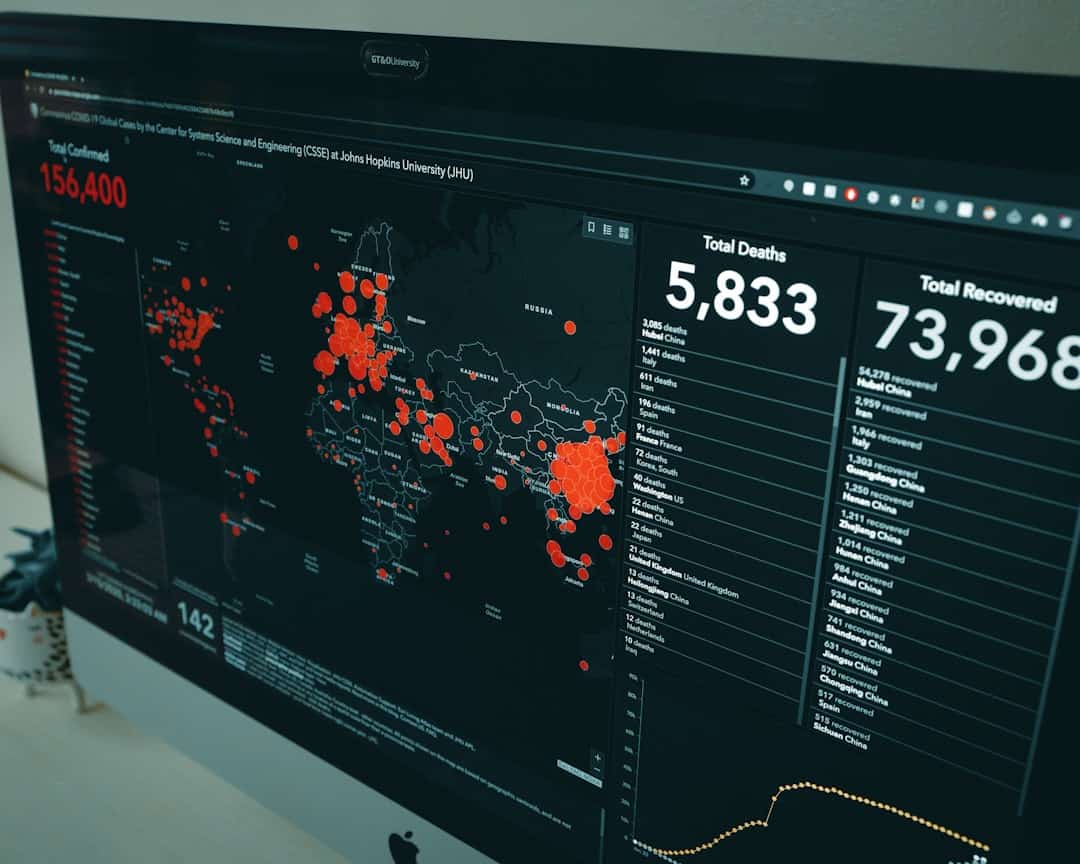Twitter has evolved into a significant platform for real-time expression of thoughts, opinions, and emotions. With a user base exceeding 330 million monthly active users, Twitter provides a vast repository of data valuable to businesses, researchers, and marketers. Emotion analysis on Twitter utilizes artificial intelligence and natural language processing techniques to interpret sentiments and emotions conveyed in tweets.
This analytical approach offers insights into public opinion, consumer behavior, and trends, serving as a crucial tool for various organizations. The application of emotion analysis on Twitter enables businesses and organizations to assess public perception of their brand, identify potential issues or crises, and evaluate sentiment towards specific products or services. By examining emotions expressed in tweets, companies can develop a more comprehensive understanding of their target audience and refine their marketing strategies accordingly.
Furthermore, researchers employ Twitter emotion analysis to study public opinion on diverse social and political matters, monitor the dissemination of misinformation and fake news, and track public sentiment during significant events or crises. The insights derived from Twitter emotion analysis have the potential to inform decision-making processes and strategies across multiple industries.
Key Takeaways
- Twitter emotion analysis involves using artificial intelligence to understand and interpret the emotions expressed in tweets.
- Artificial intelligence plays a crucial role in analyzing sentiment on Twitter by using natural language processing and machine learning algorithms.
- Emotion analysis on Twitter is important for understanding public opinion, customer feedback, and trends in real-time.
- Tools and techniques for analyzing emotions in tweets include sentiment analysis algorithms, emotion detection models, and social listening platforms.
- Emotion analysis on Twitter can impact business and marketing strategies by providing insights into customer preferences, brand perception, and market trends.
The Role of Artificial Intelligence in Analyzing Twitter Sentiment
Artificial intelligence (AI) plays a crucial role in analyzing sentiment and emotions on Twitter. AI-powered tools and techniques enable the processing of large volumes of tweets in real-time, allowing for the identification of patterns and trends in public sentiment. Natural language processing (NLP) algorithms are used to analyze the text of tweets and classify them based on the emotions expressed, such as happiness, sadness, anger, or fear.
Machine learning algorithms are then used to train models to accurately classify tweets based on their emotional content. AI also enables the development of sentiment analysis tools that can automatically categorize tweets as positive, negative, or neutral based on the language used. These tools can also identify specific emotions expressed in tweets, such as excitement, frustration, or satisfaction.
By leveraging AI, businesses and organizations can gain valuable insights into public sentiment and consumer behavior on Twitter, allowing them to make data-driven decisions and tailor their strategies accordingly. Additionally, AI-powered Sentiment Analysis tools can help researchers and policymakers track public opinion on various social and political issues, enabling them to better understand public sentiment and make informed decisions.
Understanding the Importance of Emotion Analysis on Twitter

Emotion analysis on Twitter is important for several reasons. Firstly, it provides businesses with valuable insights into consumer sentiment and behavior, allowing them to tailor their marketing strategies and improve customer satisfaction. By understanding the emotions expressed in tweets related to their brand or products, businesses can identify areas for improvement and address customer concerns more effectively.
Additionally, emotion analysis on Twitter can help businesses identify potential issues or crises before they escalate, allowing them to take proactive measures to mitigate negative sentiment and protect their brand reputation. Furthermore, emotion analysis on Twitter is important for researchers and policymakers as it provides a real-time pulse of public opinion on various social and political issues. By analyzing the emotions expressed in tweets related to specific topics or events, researchers can gain valuable insights into public sentiment and attitudes, enabling them to better understand public opinion and make informed decisions.
Emotion analysis on Twitter also has the potential to help identify and combat the spread of misinformation and fake news by tracking the emotional content of tweets related to controversial topics or events.
Tools and Techniques for Analyzing Emotions in Tweets
| Tool/Technique | Description | Pros | Cons |
|---|---|---|---|
| Sentiment Analysis | Determines the sentiment (positive, negative, neutral) of a tweet | Automated, scalable | May not capture sarcasm or irony |
| Emotion Lexicons | Uses predefined lists of words associated with specific emotions | Easy to implement | May not cover all emotions |
| Machine Learning Models | Trains models to recognize emotions based on labeled data | Can capture complex patterns | Requires labeled training data |
There are several tools and techniques available for analyzing emotions in tweets. Natural language processing (NLP) algorithms are commonly used to analyze the text of tweets and classify them based on the emotions expressed. These algorithms can identify specific emotional content in tweets, such as happiness, sadness, anger, or fear, allowing for a more nuanced understanding of public sentiment.
Additionally, machine learning algorithms are used to train models to accurately classify tweets based on their emotional content, enabling the development of sentiment analysis tools that can automatically categorize tweets as positive, negative, or neutral. Sentiment analysis tools such as Lexalytics, IBM Watson, and Google Cloud Natural Language API leverage artificial intelligence to analyze the emotional content of tweets in real-time. These tools use advanced NLP algorithms and machine learning models to accurately classify tweets based on their emotional content, providing businesses with valuable insights into consumer sentiment and behavior.
Additionally, social media monitoring platforms such as Hootsuite and Sprout Social offer sentiment analysis features that allow businesses to track public sentiment towards their brand or products on Twitter.
The Impact of Emotion Analysis on Business and Marketing Strategies
Emotion analysis on Twitter has a significant impact on business and marketing strategies. By understanding the emotions expressed in tweets related to their brand or products, businesses can gain valuable insights into consumer sentiment and behavior, allowing them to tailor their marketing strategies and improve customer satisfaction. For example, by identifying areas for improvement based on the emotional content of tweets, businesses can address customer concerns more effectively and enhance their products or services accordingly.
Furthermore, emotion analysis on Twitter enables businesses to identify potential issues or crises before they escalate, allowing them to take proactive measures to mitigate negative sentiment and protect their brand reputation. By monitoring the emotional content of tweets related to their brand or industry, businesses can detect early signs of dissatisfaction or negative sentiment and take immediate action to address these issues. Additionally, emotion analysis on Twitter can help businesses identify emerging trends and consumer preferences, enabling them to adapt their marketing strategies and stay ahead of the competition.
Ethical Considerations in Twitter Emotion Analysis

Privacy and Consent
Analyzing the emotional content of tweets involves processing personal data and potentially infringing on individuals’ privacy rights. Therefore, it is crucial for businesses and researchers to ensure that they are complying with data protection regulations and obtaining consent from individuals whose tweets are being analyzed.
Responsible Use of Emotion Analysis
There are concerns regarding the potential misuse of emotion analysis on Twitter for targeted advertising or political manipulation. Businesses must ensure that they are using emotion analysis tools responsibly and transparently, respecting individuals’ privacy rights and avoiding any form of manipulation or exploitation.
Ethical Research Practices
Researchers also need to consider the ethical implications of analyzing public sentiment on Twitter, ensuring that their research is conducted ethically and does not infringe on individuals’ rights.
Future Developments and Trends in Twitter Emotion Analysis
The future of emotion analysis on Twitter is likely to be shaped by advancements in artificial intelligence and natural language processing technologies. As AI continues to evolve, we can expect more sophisticated sentiment analysis tools that can accurately classify tweets based on their emotional content in real-time. These tools will enable businesses to gain deeper insights into consumer sentiment and behavior on Twitter, allowing them to make more informed decisions and tailor their strategies accordingly.
Furthermore, we can expect to see increased integration of emotion analysis into social media monitoring platforms, enabling businesses to track public sentiment towards their brand or products more effectively. Additionally, there is potential for emotion analysis on Twitter to be used in new ways, such as identifying emerging trends and predicting consumer behavior based on emotional cues in tweets. Overall, the future developments in Twitter emotion analysis are likely to revolutionize how businesses understand and engage with their target audience on social media.
If you’re interested in learning more about the regulatory landscape surrounding social media and emotion analysis, check out this article on challenges and opportunities in the regulatory landscape. It provides valuable insights into the legal and ethical considerations that come into play when analyzing emotions on platforms like Twitter. Additionally, for further reading on the topic, you can explore the resources and publications available on Metaversum. And if you’re curious about how emotion analysis is impacting the education and learning industries, be sure to read about the role of the metaverse in education and learning.
FAQs
What is Twitter emotion analysis?
Twitter emotion analysis is the process of using natural language processing and machine learning techniques to analyze the emotions expressed in tweets on the social media platform Twitter. This analysis can help to understand the sentiment and emotions of Twitter users towards specific topics, events, products, or brands.
How is Twitter emotion analysis performed?
Twitter emotion analysis is performed using various techniques such as sentiment analysis, text mining, and machine learning algorithms. These techniques are used to classify the emotions expressed in tweets as positive, negative, or neutral, and to identify the specific emotions such as happiness, sadness, anger, or excitement.
What are the applications of Twitter emotion analysis?
Twitter emotion analysis has various applications, including brand reputation management, customer feedback analysis, market research, public opinion monitoring, and social media marketing. It can also be used to track public sentiment towards political events, social issues, and public figures.
What are the benefits of Twitter emotion analysis?
The benefits of Twitter emotion analysis include gaining insights into public sentiment, understanding customer opinions and preferences, identifying potential issues or crises, and improving decision-making in marketing, public relations, and customer service. It can also help in identifying trends and predicting future behavior based on emotional responses.
Are there any limitations to Twitter emotion analysis?
Limitations of Twitter emotion analysis include the potential for misinterpretation of sarcasm, irony, or slang expressions, as well as the challenge of analyzing large volumes of unstructured text data. Additionally, the accuracy of emotion analysis can be influenced by the diversity of language and cultural nuances on Twitter.











Leave a Reply